|
Dates:2009/10/01~2009/12/31
Location:Rare Texts Exhibition(2F)
Since its founding in 1928, the institute of History and Philology has been committed to the collection of all kinds of valuable historical materials. Despite the trials of nine relocations during wartime, research and survey work has never been interrupted, and a myriad of difficulties have been overcome in order to expand the collection. Eighty-one short years later, the institute and its work can justly be called the apotheosis of modern scholarship. In order to celebrate its anniversary, we are pleased to present a special exhibition of books, documents, and other materials related to the history of the institute. Through the exhibition of various important pieces in the institute’s collection, we hope to both memorialize the hard-won achievements of the founders and to encourage the continued diligence of the current staff. The exhibit is divided into several sections:
Sung Dynasty Block Print Editions
When the Institute of History and Philology was first established, an “Outline for Library Preparation” was drawn up, and ancient Chinese books were widely sought. The works displayed in this exhibition—the Fu Ssu-nien Library’s three treasures (Sung dynasty editions of Shih-chi, Nan-hua chên-ching, and Wên-yüan ying-hua) and the works of the three Li’s, which were formerly stored at Ch’ün-pi-lou (Sung dynasty editions of P’i-sha-chi, Ch’ün-yü-chi and Pi-yün-chi)—are the only extant copies of these editions in the entire world. In them one can truly appreciate the artistry of the Sung dynasty bookmakers and the exquisite seals belonging to generations of book collectors. This collection is extremely valuable, and IHP’s purchase of the editions within this collection at a time when its budget was limited represented great “boldness” on the part of the institute. These editions are accompanied in exhibition by related archive files and documents, which not only record the process of the collection of these works, but also trace their respective paths through history.
Files and Archives from the Establishment of IHP
Since the institute’s establishment in 1928, research fellows have conscientiously preserved various archives and documents related to their work. For this exhibition, several representative documents and photographs have been chosen to create a retrospective of IHP’s establishment, development, and grueling relocations. One can know much by way of the “objectives of the IHP” and its organizational structure, including Fu Ssu-nien, the founding director, and other early scholars’ understanding of history and historical materials, as well as the method in which they planned the general direction of their research. Finally, letters written by important scholars are on display, in order to understand the achievements made possible by the discovery of new historical materials.
Classic Manuscript Scrolls
The finding of the scrolls from Tun-huang represent one of the four great discoveries in the history of modern Chinese diplomatics. The holdings of the Fu Ssu-nien Library include forty-nine scrolls in the Chinese, Tibetan, Western Hsia, and Uighur languages. Among these scrolls, some come from Li Shêng-to’s old collection, while others were purchased by Hsiang Ta when he was the head of the Northwestern China Expedition Team. For the exhibit, several manuscript scrolls have been chosen from the periods of the Six-Dynasties and the T’ang dynasty, along with scholars’ letters concerning their basic research. In this way, the viewer can gain some understanding of the difficulties faced by researchers of these documents.
Rare Book Collection from the Toho Bunka Jigyou Soukai
In 1925, Japan used the money from the Boxer Indemnity to establish Toho Bunka Jigyou Soukai (the Oriental Cultural Enterprise Association) in Peking and invited Chinese scholars and Japanese sinologists to work on the extension and revision of the Ssu-k’u ch’üan-shu. This project included the collection and purchase of over 27,000 works (approximately 140,000 volumes), including some from the period of Ch’ien-lung’s reign originally left out of the Ssu-k’u ch’üan-shu as well as works created from the end of Ch’ien-lung’s reign into the late Ch’ing dynasty. After China’s victory in the Second Sino-Japanese War, this collection was taken over by the Institute of History and Philology. Chang Chêng-lang then selected more than 10,000 volumes not in the collection of the Nanking main headquarters, including priceless block print, manuscript, and draft editions, some of which are marked with editors’ brushes. The original documents are displayed.
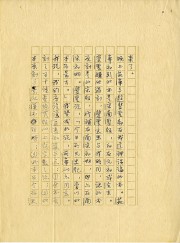

|
Letter from Hu Shih to Fu Ssu-nien
Description:In this letter, Hu Shih discusses his views about the edition of Shih-chi purchased by IHP. He states that “this version (the version purchased by IHP) is the oldest version of Shih-chi in existence,”and he expresses his belief that Fu Ssu-nien's “boldness” in purchasing the work was not mistaken.
Date:11th May, 1947 |
| |
|
| |
|

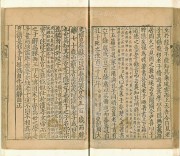
|
Shih-chi
Resource Identifier:185467,185506
Resource Type:Edition:Official edition from the Ching-you era, Sung dynasty |
| |
|
| |
|

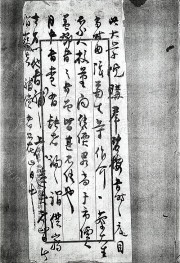
|
The Catalogue of Têng's Rare Book Collection: List of Works for Sale from Ch'ün-pi-lou
Description:In June of 1928,the Academy of the Republic of China purchased Têng Pang-shu's Ch'ün-pi-lou collection. The documents seen here are the inventory and inspection records from that purchase.
Date:1928 |
| |
|
| |
|
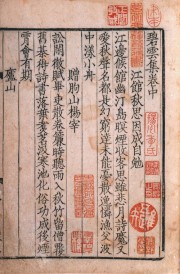
|
Pi-yün-chi
Resource Identifier:182448-49
Resource Type:Edition:Sung dynasty commercial printer edition |
| |
|
| |
|
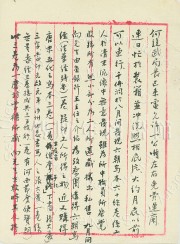

|
Letter from Hsia Nai to Fu Ssu-nien and Li Chi
Description:This letter contains the survey and excavation reports of the Northwest China Expedition Team. It records the scholar Hsiang Ta's purchase of fragments of the Saddharmapundarīka-sūtra(Lotus Sutra)for the team as well as the team's purchase of manuscripts of the Aparamitāyur-nāma-mahāyānasūtra(Great Vehicle Sutra of the One of Immeasurable Lifespan), Wei-mo shou-chi, and Wei-mo-ching shih-ch'ien têng hsiao-ch'ao (the last three manuscripts were written in the end of the T'ang dynasty or during the Five Dynasties period). The amount paid for the last three manuscripts was over three tan and three tou of wheat(equivalent to approximately 225 kilograms). A tan of wheat was worth about six thousand dollars (fiat currency) at the time of the purchase.
Date:25th November, 1944 |
| |
|
| |
|
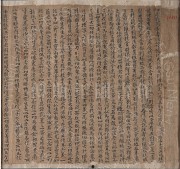
|
Wei-mo shou-chi
Resource Identifier:188104
Resource Type:Edition:Chang's manuscripts, Tun-huang scrolls |
| |
|
| |
|

|
The Inventory of Books and Furniture of Toho Bunka Jigyou Soukai (the Oriental Cultural Enterprise Association) is Transferred to the Institute of History and Philology from the Peking-Tientsin Office of the Ministry of Education.
Description:This inventory explains that the persons originally in charge of transferring and accepting the inventory were Hashikawa Tokio and Shên Chien-shih, but that these positions had later been taken over by Shên Chien-Shih and Fu Ssu-nien respectively. The inventory also includes catalogues of architectural explanations, books,furniture, registers and records, etc. Finally, the inventory shows how the Institute of History and Philology came to possess the book collection of Toho Bunka Jigyou Soukai.
Date:1st August, 1946 |
| |
|
| |
|
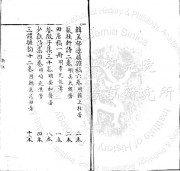

|
Ssu-k'u-kuan chin-ch'êng shu-chi ti-pu (Logbook of Works Presented to the Complete Library Bureau)
Resource Identifier:
176193-94
Resource Type:
Edition:Original handwritten copy from the Ssu-k'u ch'üan-shu Kuan
Date:
Compiled by officials during the Ch'ien-lung reign period, Ch'ing dynasty |
| |
|
| |
|

|
Letter from Fu Ssu-nien, Ku Chieh-kang, and Yang Chên-shêng to the Academy of the Republic of China
Description:In 1928, the Academy of the Republic of China hired Fu Ssu-nien, Ku Chieh-kang, and Yang Chên-shêng to be the preliminary members of the Institute of History and Philology responsible for preparatory works. In this
letter, Fu et al report on progress in the establishment of the Preparatory Office.
Date:30th April, 1928 |
| |
|
| |
|
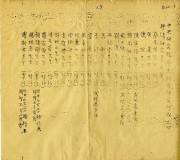
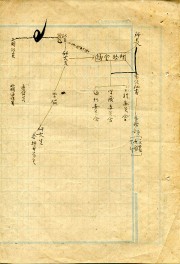
|
List of Research Fellows at the Time of IHP's Establishment Organizational Chart of the Institute of History and Philology
Date:1928 |
| |
|
| |
|
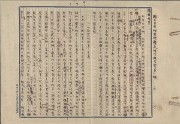
|
The First Term Report of Academia Sinica's Institute of History and Philology
Description:In this report, Fu Ssu-nien explains to Ts'ai Yüan-p'ei the significance of IHP's establishment as well as the various projects IHP was preparing to embark upon at the time of the report. The report also includes plans and outlines for many of IHP's major projects, such as the purchase of Ming and Ch'ing dynasty archives, investigations of various dialect languages, excavation of the Ruins of Yin, and surveys of Southwestern ethnic groups.
Date:30th November, 1928 |
| |
|
| |
|
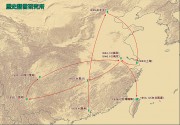
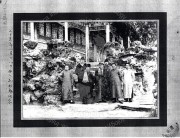
|
Letter from the Executive Council Photograph of Research Fellows in Peihai Park, Peking
Description:In 1929, the Institute of History and Philology relocated to Ching-hsin Building in Peihai Park, Peking. |
| |
|
| |
|

|
Document Pertaining to IHP's Lungch'üan Township in K'unming
Description:In 1939, Japanese forces progressed further inland and IHP once again had to relocate, this time to K'unming in Yünnan province. |
| |
|
| |
|
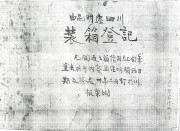

|
Registry Records of Packed Items for IHP's Move from K'unming to Szechw
Description:In 1940, IHP moved to Lichuang, Szechwan province. |
| |
|
| |
|


|
Fu Ssu-nien's Draft on Matters Concerning the Re-establishment of IHP Inventory of Packed Items
Description:After 1946 and China's victory in the Second Sino-Japanese War, the Institute of History and Philology returned to Nanking. |
| |
|
| |
|
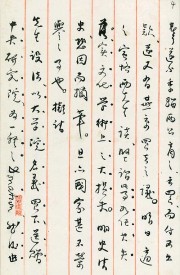


|
Letter from Fu Ssu-nien to Ts'ai Yüan-p'ei
Description:In this letter, Fu Ssu-nien requests that Ts'ai Yüan-p'ei (in the name of the Academy of the Republic of China) arrange for the purchase of “seven thousand bags of Ming and Ch'ing dynasty archive files.” He further requests that these files be given to Academia Sinica and then assigned to the Institute of History and Philology for organization.
Date:11th September, 1928 |
| |
|
| |
|
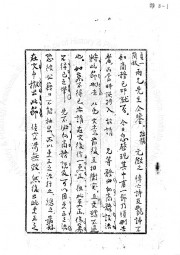
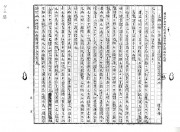
|
Letter from Ch'ên Yin-ch'üeh to Lao Kan and Na Lien-chün Manuscript of Ch’ên Yin-ch'üeh's “Commentaries to Yüan Wei-chih's Poems of Love and Mourning (a draft of commentaries to Yüan and Pai's poetry)”
Description:This letter is a revision of Ch'ên's work “Yüan Wei-chih's Poems of Love and Mourning.”
Date:19th May, 1947 |
| |
|
| |
|
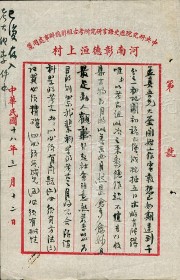

|
Letter from Li Chi to Fu Ssu-nien
Description:This letter describes the five criteria necessary to a scientific study of archaeology: (1) one must have inquiries, (2) one must adhere to a certain methodology, (3) one must make accurate records, (4) one must be objective, and (5) one must have patience. (From the second excavation of the Ruins of Yin)
Date:12th March, 1929 |
Text and images are provided by Institute of History and Philology, Academia Sinica
Digital Resources and Archived Images Application
|











































